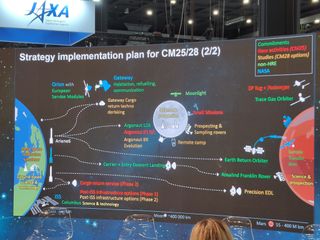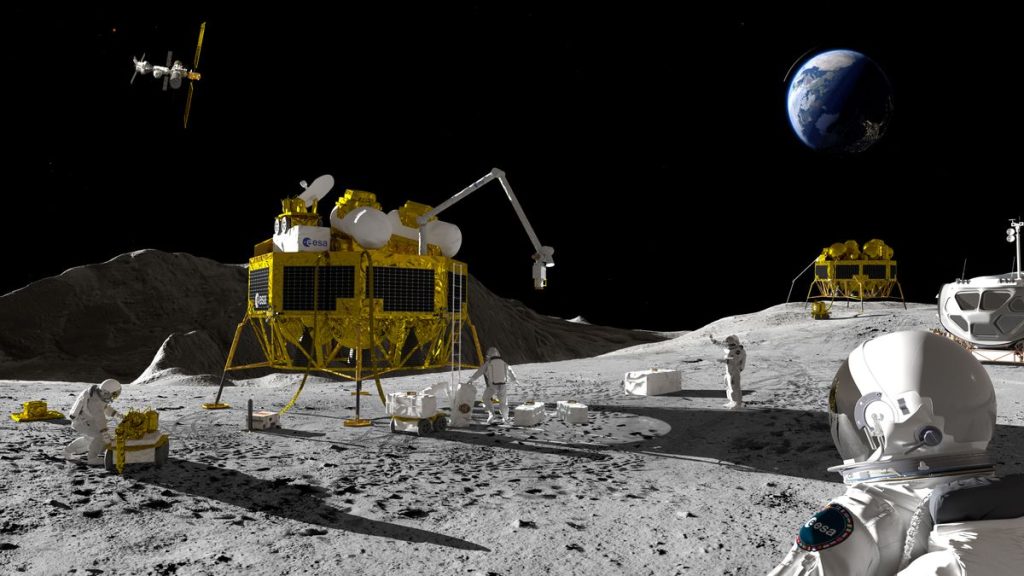The European Space Agency (ESA) is charting a bold course for the future, aiming to solidify Europe’s position in space exploration through the “Explore 2040” initiative.
Josef Aschbacher, director-general of ESA, emphasized the need for Europe to increase its space activities during an Oct. 16 talk at the International Astronautical Congress (IAC) 2024 in Milan. The agency is now building a strategy to define its future. One key pillar of this is exploration.
“We have a process with our Member States called Explore 2040, which is a perspective at the horizon of 2040 and where Europe can go,” Daniel Neuenschwander, director of human and robotic exploration at ESA, said in Milan.
“What we want, above all, is to increase the pace and how we conduct programs,” Neuenschwander said. That includes speeding up innovation and developing transportation and infrastructure for exploration, he added.
Related: Europe makes moves to rendezvous with asteroid Apophis in 2029
Neuenschwander laid out plans for a presence in low Earth orbit (LEO), before heading to the moon and beyond.
“We want to bring Europeans around the moon and on the surface of the moon… And then the horizon goal is, of course, to bring humans to Mars,” Neuenschwander said.
At the heart of “Explore 2040” is the upcoming 2025 Ministerial Council meeting, where member states will determine the future course for Europe in space. These key summit meetings take place every three years to decide the level of commitment of ESA’s member states and which programs they will commit to. Support is vital for Explore 2040.
The plan for LEO involves securing a post-International Space Station (ISS) pathway, which includes a LEO cargo program which, through developing return capabilities, can set the stage for full European human spaceflight capabilities.
Speaking in Milan, ESA astronaut Samantha Cristoforetti stated that initial goals include demonstrating end-to-end cargo delivery and return services to the ISS.

For the moon, Europe is already providing the European Service Module as part of NASA’s Orion spacecraft, meaning ESA will already be flying to the moon in some form. The next stage, however, is landing capabilities.
For this, ESA is developing Argonaut, a class of landers for putting cargo on the moon, being designed in partnership with Airbus.
The logistics lander will be crucial to enabling international cooperation and sustainable lunar operations, according to ESA astronaut Alexander Gerst.
“Argonaut fills in the gap of how we approach landing on the moon and then being able to operate on the surface, thanks to the 1.7 tons of cargo [it can carry],” Gerst said.
For the road to Mars, ESA plans to proceed with the LightShip program to establish a communication and navigation network around Mars. LightShip is, according to ESA, an electric propulsive tug that will deliver one or more passenger spacecraft to Mars, provide communications and navigation services, and be capable of carrying a range of scientific payloads.
These ambitions indicate how ESA is positioning itself to make the agency instrumental to future exploration.
In addition to these commitments, ESA is initiating its Moonlight program to provide navigation and communications services around the moon. It will be commissioning several small lunar missions, depending on the outcome of the 2025 ministerial summit. For Mars, it is committed to launching the much-delayed Rosalind Franklin rover and providing the Earth return orbiter for the Mars Sample Return mission with NASA.
For consideration in the following crucial Ministerial Council in 2028 will be lunar prospecting and sampling missions, possibly a lunar remote camp, and lunar Gateway cargo return, as well as a possible evolution of the Argonaut lander. A new phase of post-ISS infrastructure development will also be discussed.
ESA’s plans for Explore 2040 are not finalized. It is one aspect of a broader ESA strategy under discussion.
“We have discussed the ESA Strategy 2040, which is a document that is being prepared right now,” Aschbacher told reporters during a press conference on Oct. 24, discussing ESA’s 329th ministerial meeting.
“So we have a draft of the document that was presented to the delegations. It was very highly appreciated. We are not yet at the final version. The final version is expected to be prepared for December.”
ESA’s vision for 2040 hinges not only on innovative projects but on the unwavering support of its 22 member states to transform plans into reality.

